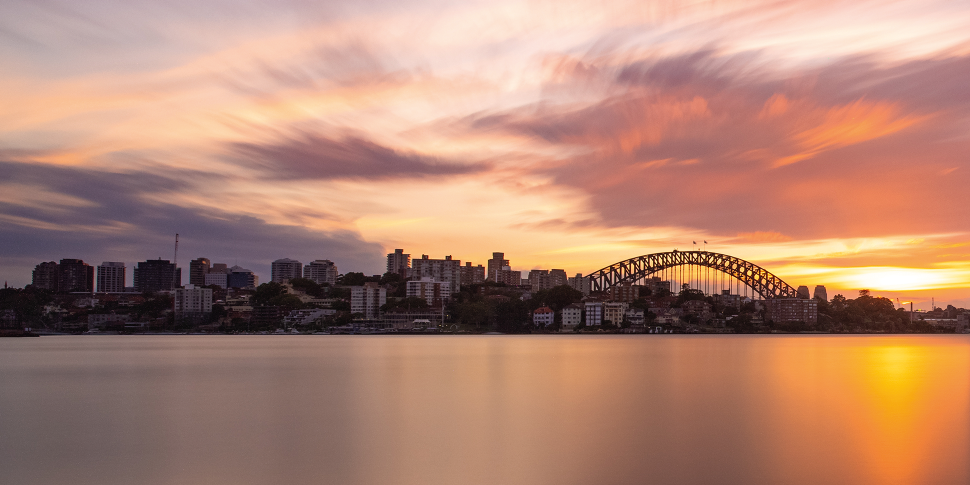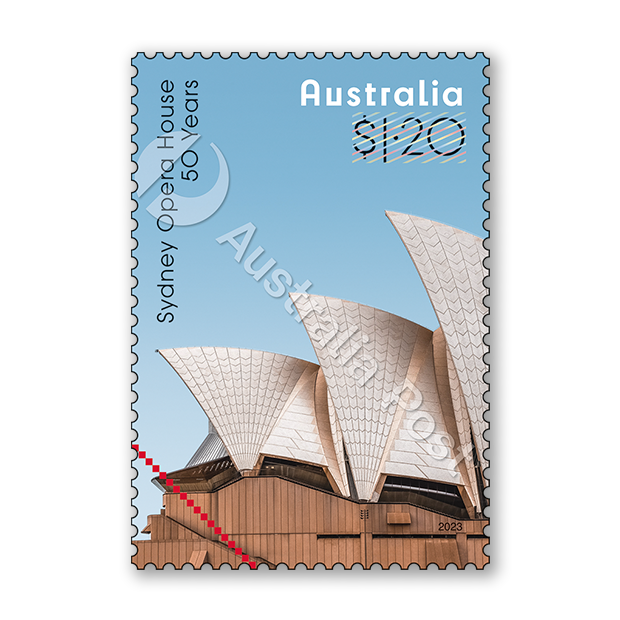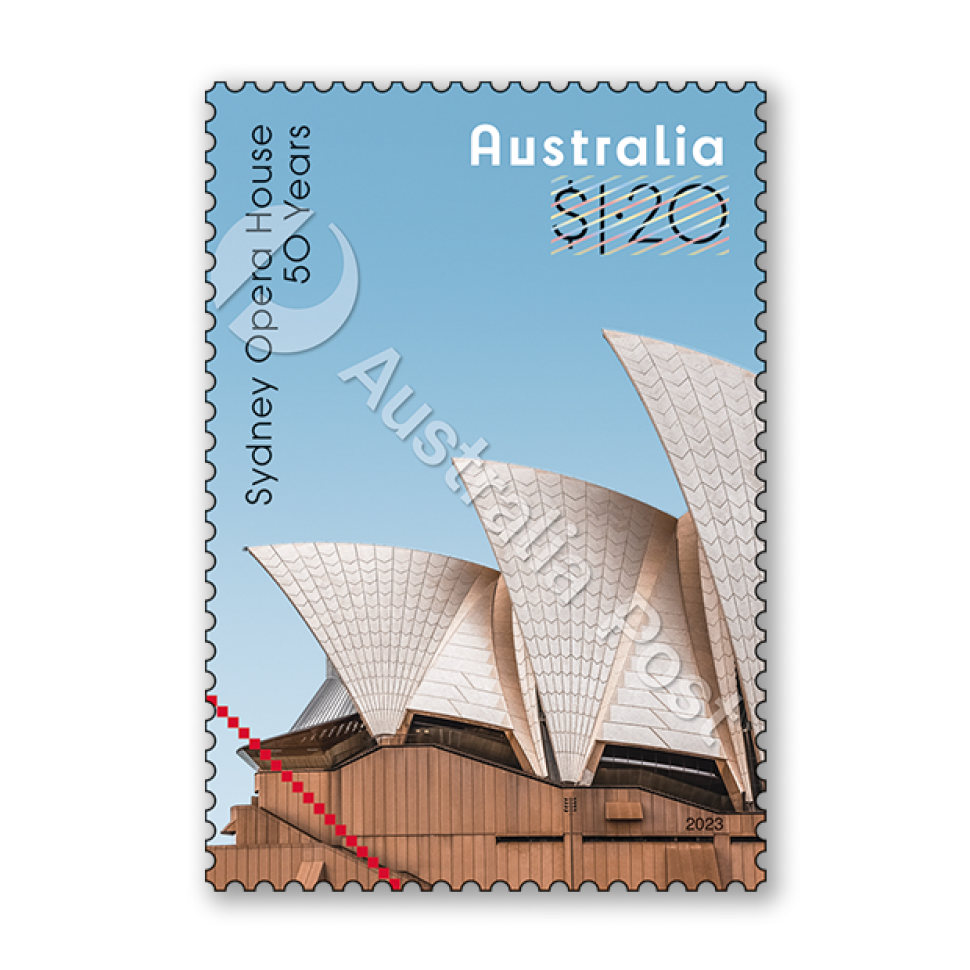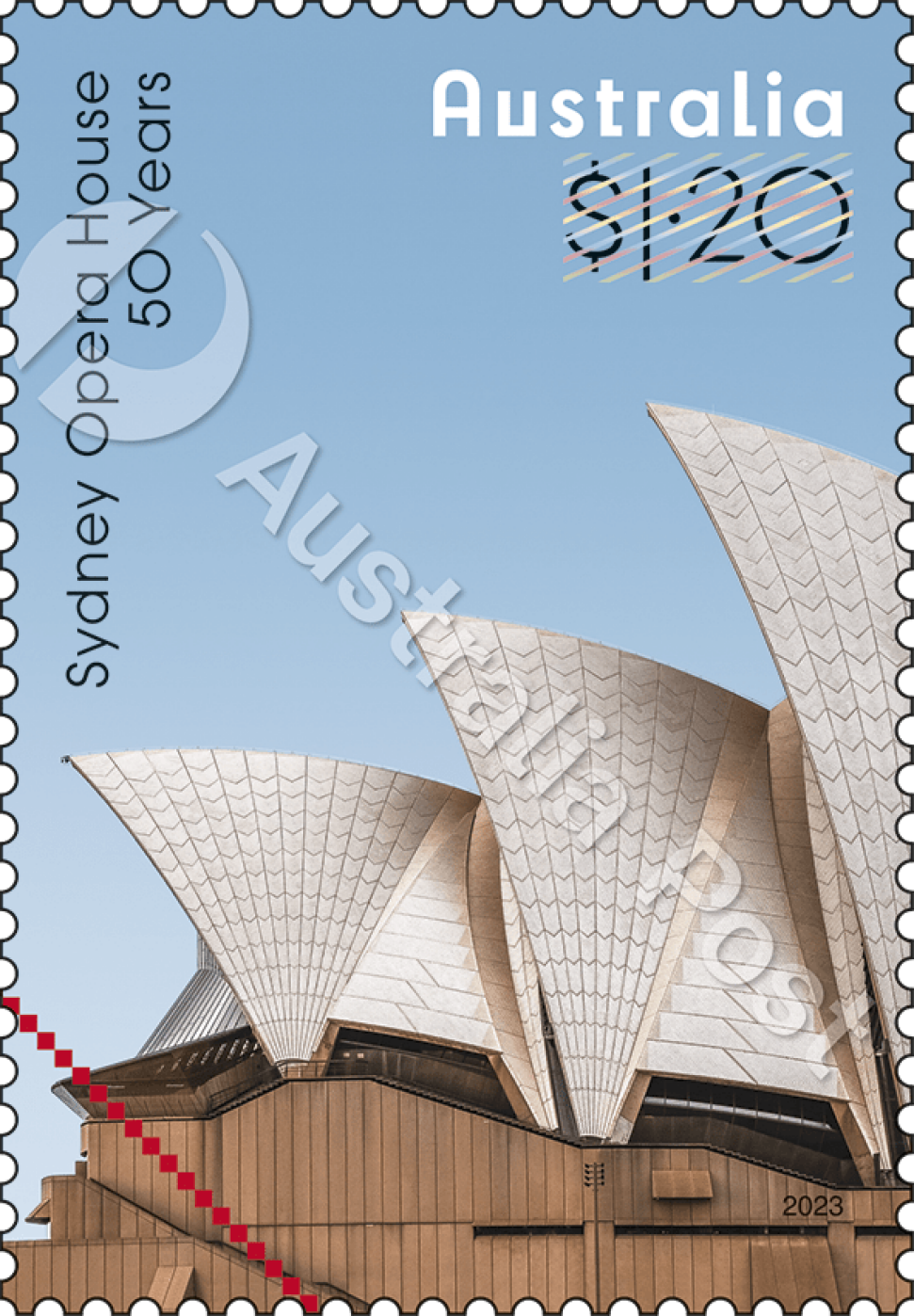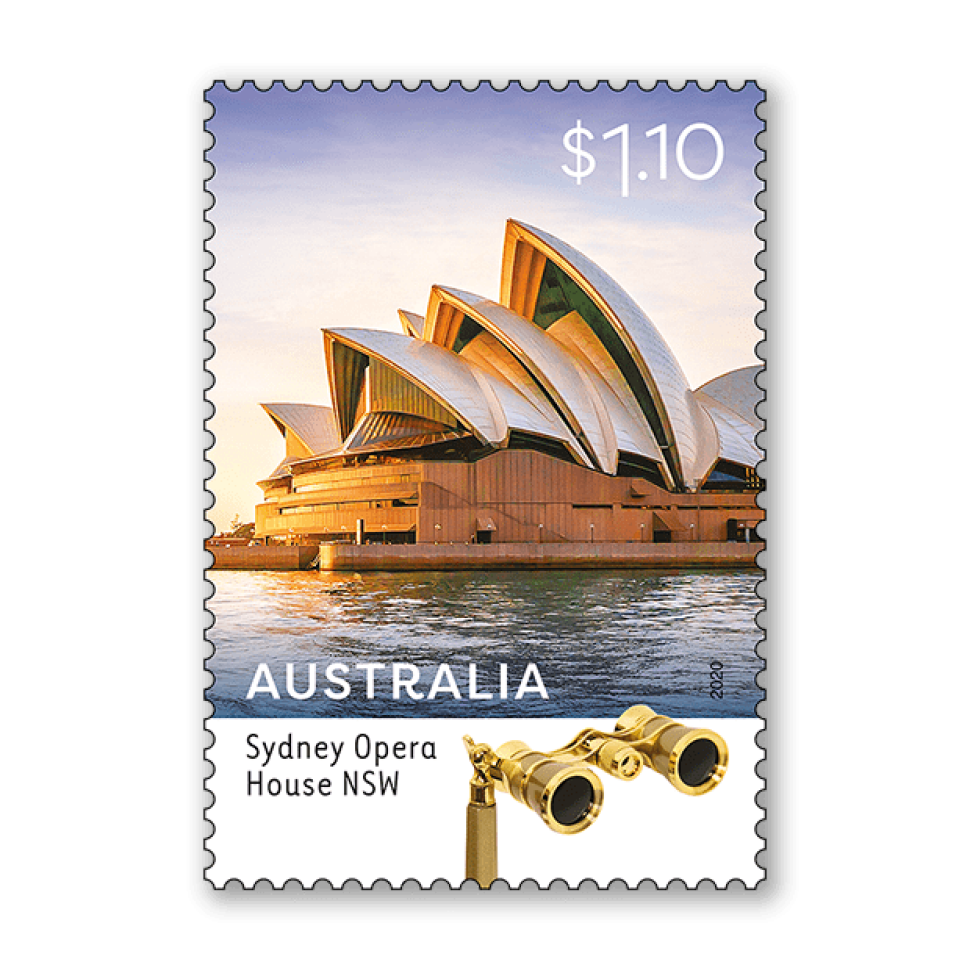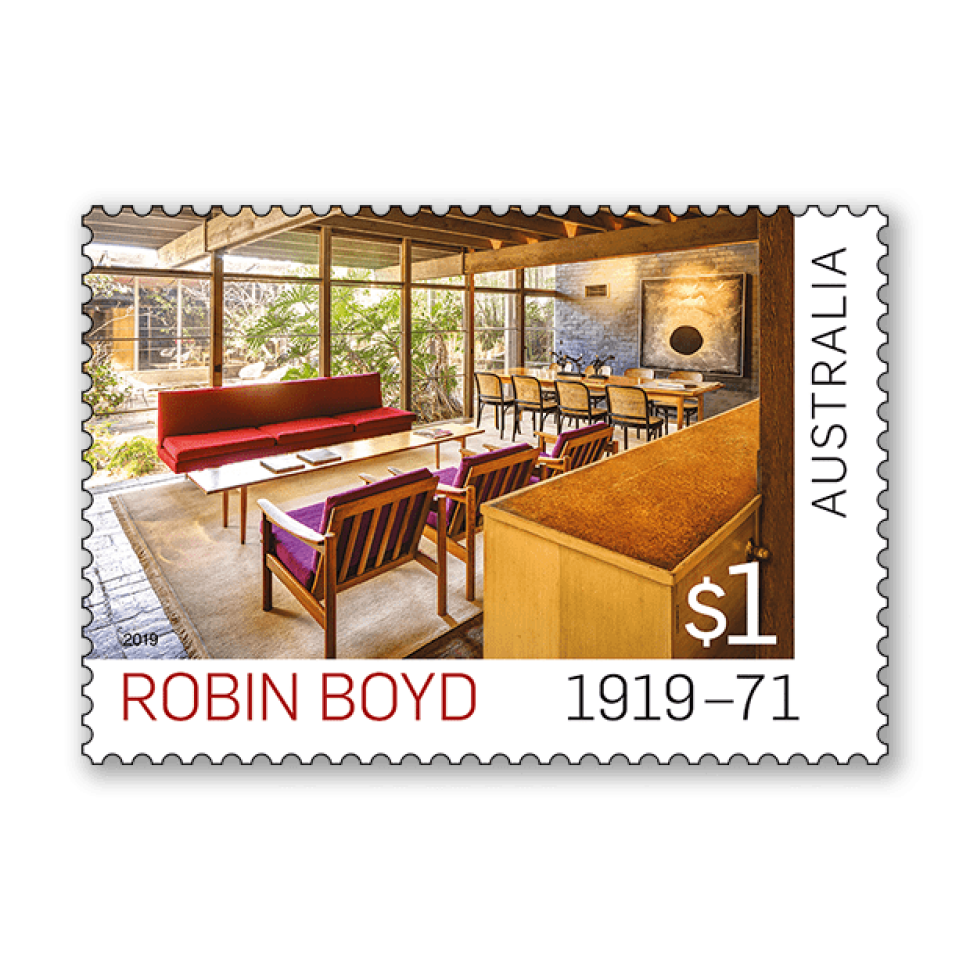Overview
The Sydney Opera House was formally opened by Queen Elizabeth II, on 20 October 1973. Acclaimed throughout the world and recognised as a masterpiece of creative genius, this extraordinary building was designed by Danish architect Jørn Utzon (1918–2008), who was awarded the project in 1957 following an international design competition. With its prominent location on Bennelong Point, the Opera House is a fitting response to its spectacular harbour setting.
The idea for a dedicated performing arts centre in Sydney had been discussed for decades, but in the mid-1950s the idea gained political traction, during what was a transformative period for Australia: a rapidly expanding economy, fuelled by very high levels of postwar immigration from Europe and a renewed sense of national optimism.
Construction of the podium began in 1959, while Utzon and a team of architects and engineers explored how to build the Opera House’s shell-shaped roof. Between 1958 and 1962, the roof design for the Sydney Opera House evolved through various iterations: parabolic, ellipsoid and, finally, the spherical geometry that so brilliantly formed the shells and is considered a milestone in 20th-century architecture.
While Utzon’s design was hailed, the judges’ premonition of associated controversy was indeed correct. Utzon resigned from the project in 1966, before its completion, after facing increasing criticism on account of the time and cost of the project. Australian architect Peter Hall (1931–95) took on the mammoth task of completing the project.
In 2003, Utzon received the Pritzker Prize, architecture’s highest honour, for his contributions to architecture. The Opera House was inscribed on the World Heritage List in 2007 as “a masterpiece of 20th century architecture”, one of only two cultural sites to be listed during the lifetime of its architect.
As well as being an architectural icon, the Opera House is Australia’s number one tourist destination. Over the decades, it has been home to many of the world’s greatest artists and performances, and a meeting place for matters of local and international significance.
Technical specifications
- Issue date
- 10 October 2023
- Issue withdrawal date
- 1 May 2024
- Denomination
- $1.20 x 1, $3 (Int.) x 1
- Stamp & product design
- Jason Watts, Australia Post Design Studio
- Paper: gummed
- Tullis Russell 104gsm Red Phosphor
- Paper: self-adhesive
- Tullis Russell Red Phos PSA (P55) 100GM S/A (Roll- Raflacoat RP51 WG 65)
- Printer (s/a)
- RA Printing (Rapid Labels)
- Printing process (roll)
- Offset lithography (Inkjet Printing 1200 DPI)
- Stamp size (mm)
- 26 x 37.5
- Minisheet (mm)
- 135 x 80
- Perforations
- 14.6 x 13.86
- Sheet layout
- Module of 50 (2 x 25 no design) Matt Overprintable Varnish (roll)
- FDI Postmark
- Sydney NSW 2000
- FDI withdrawal date
- 8 November 2023
Shop our stamp collectables
Set of Gummed Stamps:
Set of Sydney Opera House: 50 Years Gummed Stamps
This set presents the two stamps from the Sydney Opera House: 50 Years stamp issue.

Minisheet:
Sydney Opera House: 50 Years Minisheet
This minisheet is from the Sydney Opera House: 50 Years stamp issue and presents the two stamps with elevation designs in the background.
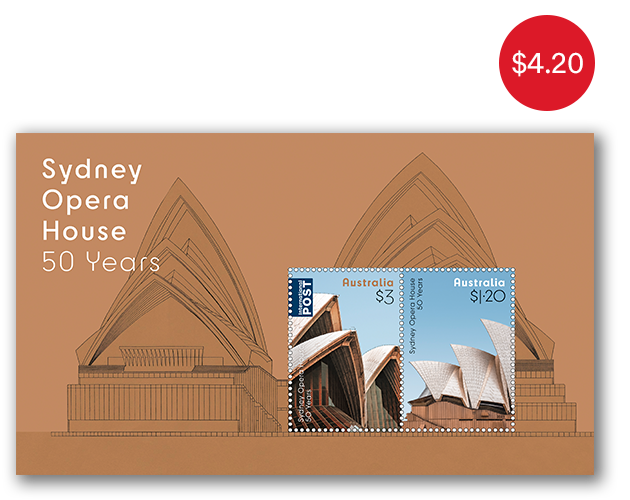
Stamp Pack:
Sydney Opera House: 50 Years Stamp Pack
This Sydney Opera House: 50 Years stamp pack contains the two stamps and minisheet from the stamp issue presented in a high-quality folder.
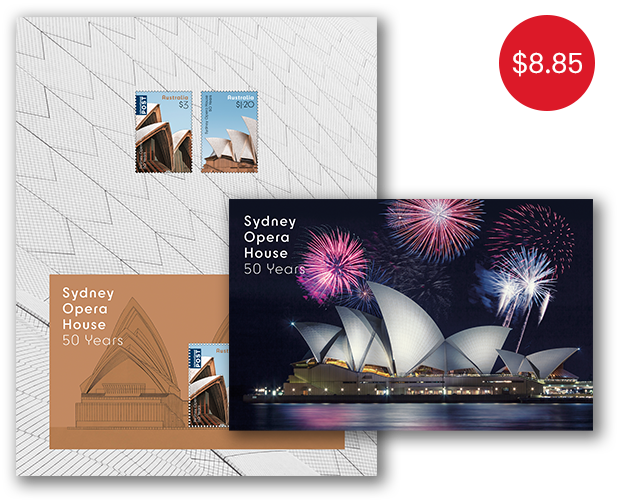
Maxicards:
Set of Sydney Opera House: 50 Years Maxicards
This maxicard set contains the two maxicards from the Sydney Opera House: 50 Years stamp issue.

- Set of Gummed Stamps
- Minisheet
- Stamp Pack
- Maxicards
Additional collectables:
This content was produced at the time of the stamp issue release date and will not be updated.
